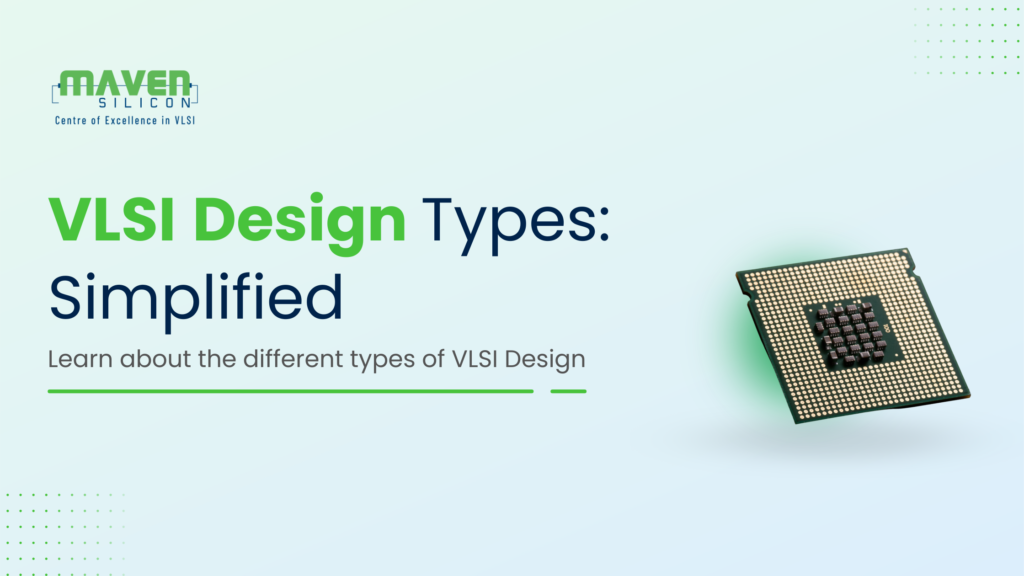
VLSI design is a complex and challenging field, involving the creation of integrated circuits that contain millions or billions of transistors. There are several different types of VLSI design, each of which offers its own set of advantages and disadvantages.
In this blog, we will take a closer look at two of the most common types of VLSI design which are:
- Programmable VLSI Design
- Non-programmable VLSI Design
1. Programmable VLSI Design
Programmable VLSI design involves creating a circuit that can be easily reconfigured to perform different tasks. This is accomplished through the use of programmable logic elements, such as FPGAs or CPLDs. These elements contain a set of configurable digital logic gates that can be programmed to perform a wide range of functions. Programmable VLSI designs are typically created using a combination of custom digital logic circuits and programmable logic elements, allowing for a high degree of flexibility and adaptability.
2. Non-programmable VLSI Design
Non-programmable VLSI design, on the other hand, involves creating a fixed circuit that cannot be easily modified once it has been fabricated. This type of design is often used for high-performance systems that require a great deal of control over the circuit’s operation. Non-programmable VLSI designs are typically created using custom-designed digital logic circuits, such as standard-cell or full-custom designs. These circuits are designed and tested to meet the specific requirements of the system, and cannot be easily changed once they have been fabricated.
Also read: Why Digital Electronics is important for VLSI Design?
Now you might have understood the types of VLSI design, then let’s explore the benefits and drawbacks of both programmable and non-programmable VLSI designs, and discuss the factors that should be considered when choosing between these two approaches.
Benefits and Drawbacks Programmable VLSI Design
In programmable VLSI design, the use of programmable logic elements allows for greater flexibility and adaptability compared to non-programmable design. With programmable VLSI, the circuit can be easily reconfigured to perform different tasks, making it well-suited for applications that require a high degree of flexibility and adaptability. This can be particularly useful in situations where the requirements of the system may change over time, or where the system must be able to perform a wide range of functions.
One of the main advantages of programmable VLSI design is that it allows for faster design times and higher design productivity. Since programmable logic elements are pre-designed and pre-tested, they can be easily integrated into the design, reducing the amount of time and effort required to create the circuit. This makes programmable VLSI an attractive option for designers working on tight deadlines or needing to prototype a design quickly.
However, programmable VLSI design also has its drawbacks. One of the main disadvantages is that it may not offer the same level of performance as a non-programmable design. Since programmable logic elements are designed to be flexible and adaptable, they may not be as optimized for performance as custom-designed digital logic circuits. This can make programmable VLSI less suitable for applications that require a high-performance or low-power operation.
Benefits and Drawbacks Non-Programmable VLSI Design
In non-programmable VLSI design, custom digital logic circuits are created to meet the specific requirements of the system. These circuits are carefully designed and tested to ensure that they meet the desired performance specifications, and are not easily modifiable once they have been fabricated. This makes non-programmable VLSI well-suited for applications that require high-performance or low-power operation since the circuits can be optimized for these characteristics.
One of the main advantages of non-programmable VLSI design is that it offers high performance and precise control. Since the circuits are custom-designed, they can be optimized for performance and power consumption, making them well-suited for applications that require high-performance or low-power operation. In addition, non-programmable VLSI allows for precise control over the operation of the circuit, making it well-suited for applications that require a high degree of control.
However, non-programmable VLSI design also has its drawbacks. One of the main disadvantages is that it is inflexible and cannot be easily modified once it has been fabricated. Since the circuits are custom-designed and cannot be easily changed, it can be difficult and costly to modify the design. This makes non-programmable VLSI less suitable for applications that may require changes to the design over time, or that require a high degree of flexibility and adaptability.
Conclusion
Overall, the choice between programmable and non-programmable VLSI design will depend on the specific requirements and goals of the system being designed. Programmable VLSI is best for applications that require flexibility and adaptability, while non-programmable VLSI is best for applications that require a high-performance or low-power operation. Designers should carefully consider the trade-offs between these two approaches when choosing the best VLSI design for their needs.
To get closer to VLSI job opportunities, explore Industry-oriented online, blended and offline VLSI Certification Courses/ Internship programs from Maven Silicon.